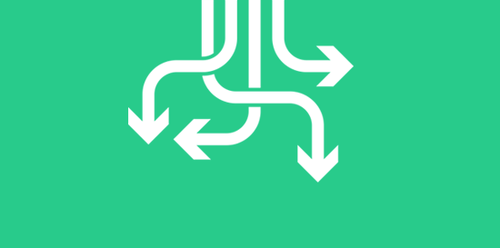
Entrepreneurs, business owners, and creatives have amazing ideas. We can identify areas of improvement in our day-to-day lives, in different marketplaces, and around the world. We are problem solvers that believe, with the right amount of determination and focus, we can truly change the way things are.
The problem arises when entrepreneurs find themselves drifting down the creative “rabbit hole” and losing sight of the problem that sparked their creative interests in the first place. As the Co-Founder of a mobile consultancy, I hear hundreds of app ideas each year. Some are absolutely brilliant and some completely terrible. My job is to help our clients understand that ideas alone are worthless. We all know that it takes time, research, learning and implementation to transform an idea for an app into a successful product or service.
Bloated platforms, like Facebook, have negatively influenced entrepreneurs into overcomplicating their mobile products. We so easily forget that Zuck‘ was simply trying to facilitate interactions among students at Harvard. Now Facebook has 1.4B monthly active users and offers events, photos, video, chat, groups, pages, music, e-commerce, search, and a plethora of other features you probably don’t know about or use.
In a fascinating article, the New York Times describes a phenomenon know as Decision Fatigue:
"No matter how rational and high-minded you try to be, you can’t make decision after decision without paying a biological price. It’s different from ordinary physical fatigue — you’re not consciously aware of being tired — but you’re low on mental energy. The more choices you make throughout the day, the harder each one becomes for your brain, and eventually it looks for shortcuts, usually in either of two very different ways. One shortcut is to become reckless: to act impulsively instead of expending the energy to first think through the consequences. (Sure, tweet that photo! What could go wrong?) The other shortcut is the ultimate energy saver: do nothing. Instead of agonizing over decisions, avoid any choice."
I’m a strong believer that decision fatigue exists in our mobile experiences and must be accounted for when designing our mobile products. Mobile apps are built to solve real problems. They are built to streamline a process, increase efficiency, and ultimately, ward off decision fatigue. Imagine a user downloading your app for the first time and being overwhelmed with the amount of features they are able to explore and interact with. They are presented with so many options that they ultimately choose the “other shortcut” and do nothing. In this case, making yet another easy decision, they delete the app from their phone before exploring its potential.
Between 1975 and 2008, the number of products in the average supermarket swelled from 8,948 to almost 47,000. On the contrary, Aldi has become the 6th largest supermarket in the United Kingdom by offering a very limited supply of merely 1,500 products. When a user, customer, or client has to decide between 27 types of toothpaste, they may forget that they need to brush their teeth in the first place.
We encourage our clients to truly focus on the “why” and leave the other features for future versions of their app. If your users really want photo and video messaging in the grocery list app you’re building, we promise, they will tell you. Don’t waste precious time, resourses, and money building features that don’t solve a problem and add to the decision fatigue your users already face each day.
Can your business benefit from a mobile app? Our team of code enthusiasts would be glad to chat about the possibilities and build something great, together.